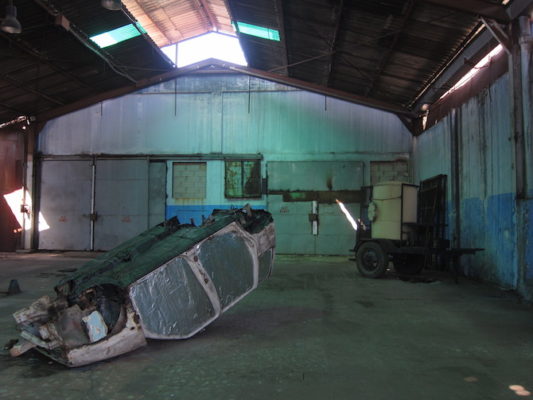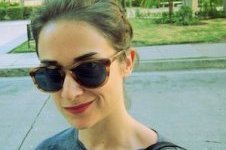Search
To search for an exact match, type the word or phrase you want in quotation marks.
A*DESK has been offering since 2002 contents about criticism and contemporary art. A*DESK has become consolidated thanks to all those who have believed in the project, all those who have followed us, debating, participating and collaborating. Many people have collaborated with A*DESK, and continue to do so. Their efforts, knowledge and belief in the project are what make it grow internationally. At A*DESK we have also generated work for over one hundred professionals in culture, from small collaborations with reviews and classes, to more prolonged and intense collaborations.
At A*DESK we believe in the need for free and universal access to culture and knowledge. We want to carry on being independent, remaining open to more ideas and opinions. If you believe in A*DESK, we need your backing to be able to continue. You can now participate in the project by supporting it. You can choose how much you want to contribute to the project.
You can decide how much you want to bring to the project.

In a small boat you come to the other side of the bay. You disembark at the Casa Blanca quay, leaving on your right the flame of the refinery, to stumble upon dozens of colourful deckchairs, a piece by Guisela Munita. You also see a park wall being painted in colours by a group of six people according to a pattern, on the corner of the streets Coloma and Central, the work of the Venezuelan, Juvenal Ravelo. You join them and chat. There is also an original train engine from the railway line of Hershey chocolates that before the Revolution joined the district with the east of the island. Daniel Buren brought it. We walk through Casa Blanca at Maritza’s we find one of the locations of the museum Puno MoCA, by César Cornejo along with material produced by the project Echando lápiz, by the Colombians Graciela Duarte and Manuel Santana with children from the district, who are on vacation. In exchange for letting them use the façade and the living room, they have fixed the walls of her house. The frontier between aesthetics and ethics seems blurred.
We already know that art biennales articulate an elitist tourism. From this perspective biennales are spaces where art professionals reaffirm their ties with the community they identify with: a shared calendar designed according to periodic meetings of many unions and disparate communities, which is not an exclusive trait of the global industry of contemporary art. What distinguishes biennales from other professional circuits is the high level of public visibility and the role they sometimes adopt in representing the nation where they are held. In some cases this is accompanied with the defence of specific aesthetic politics, as in the Havana Biennial, where traditionally preference has been given to artists from the Third World, although in recent editions artists coming from Europe and the United States have also been integrated. It doesn’t matter where the invited artists come from, what people look at today, in the words of the director Jorge Fernández Torres, is “the network of its context”. In Havana 2015, gallery exhibitions alternate with numerous interventions in public spaces and also private ones not normally used to house art: corners, private homes, abandoned factories, parks, boats, art centres, museums and taxi-bikes.
You’re inside a burnt factory, looking for artworks you can’t find. Your body begins to suspect everything is art, but then says no, it’s just a factory, all this was already here. So you explain everything to yourself, based on its conditions of production, on the series of relations between bodies, objects, materials, and scripts inscribed in the space. But later you say, come on, let’s see, this is art and it has to be all here, all is happening here, it’s I just haven’t seen it yet. So you look with a contemplative eye and begin to seek for clues of the artist’s presence, who you recognise by name, because the map says he’s here. But you can’t see him.
Seventy-one locations distributed in six districts of Havana. The majority conglomerate in Old Havana, where official spaces like the Museo Nacional de Bellas Artes (with works by Luis Enrique López Chávez), the Centro de Desarrollo de las Artes Visuales (with a group exhibition including, amongst others, Carsten Nicolai, Emeka Ogboh, and Humberto Díaz), or the Wifredo Lam Art Centre, headquarters of the Biennale (with a wide-ranging exhibition bringing together pieces by Dolores Cáceres, Lázaro Saavedra, Nikolaus Gaarstener, to name a few), coexist with interventions such as the one by Lang & Baumann in the Edificio Metropolitana (a large plastic inflatable tube that makes the air circulate from window to window on the exterior façade of the building) or the graffiti by Regina Silveira’s paintings at the parks across the Palacio de la Artesanía and that of the Avenida del Puerto. Felipe Dulzaides pays homage to his father in FD play FD. Luis Camnitzer teaches a workshop on conceptual art in the Casa de las Américas. Adrián Villar Rojas brought his hornero nests from Argentina, inciting the local fauna in different parks. Walking through the streets, you bump into house corners restored by Daniel Buren. Entering the Wifredo Lam, workers offer money for your opinions on economic policies, in a reenactment of the piece This is Exchange by Tino Sehgal.
In the Pabellón Cuba building Dannys Montes by Oca and Royce W. Smith curated Entre, Dentro, Fuera a show that takes the correspondence between Cuba and the United States as its central theme. Artists like Glenda Salazar, Levente Sulyok, Stephanie Syjuco, Omar Estrada, Susana Pilar Delahante Matienzo, or Levi Orta talk of barriers and changes of state, of cultural translation, transference, fusion and crossovers. It’s in this context where the Mexican Pedro Lasch inquires about natural and cultural disasters, in an endeavour to arrive together to the origins of the dichotomies feigning to establish the bases of seemingly opposed frames of knowledge and practice.
Those bits of scaffolding don’t seem as burnt as the rest of the factory. They must be art. Or is it just a factory. The map indicates there is a piece by Pierre Huyge hidden here and you say to yourself those are always difficult to see or…too easy; so where is it? But you don’t see it. Every now and again you see a child running, hiding behind the pieces and you say, ah, that must be the piece. It’s all burnt. Bricks, the same bricks that my father saw twenty-five years ago in this truck factory repurposed during the special period to the mending of bicycles. Later, I raise my head and there is a parachute, a parachute with no body, just an open parachute, swinging at the rhythm of the Caribbean breeze. Hanging from one of the beams of the roof, it moves slowly. Everything rings with the wind moving metals and you follow it, not knowing if things are art or factory, even though the parachute is suspicious.
Unlike other present biennales, Havana’s doesn’t need to invest in the simulacrum of the debate about the relevance of Marxist thinking today. This discussion, that has informed daily life of the Caribbean nation for the last six decades, anticipates new official readings of the earliest Marxist texts. Less science and more practice-based theory, in a real endeavour to think of a transition towards a socialism not suffocated by the U.S. embargo. It’s a discussion situated in the Cuban reality. Objects acquire meaning in relation to the context. Pieces don’t matter as much as their insertion into the series of relations that make up the urban fabric. How often does art happen to street wanderers. What makes it possible. Discussing the success or failure of a biennale has become a banal question; this biennale confuses you announcing the proximity of a paradigm shift, on a local scale but also in relation to the global hegemonic notion of what constitutes a work of art. Urban ruins from the past, like the Argüelles bike factory, location for the Montañas con una esquina rota, allude to notions of industrial value long out of date in the Habana context and in so many others, mutating towards other regimes of relations with spaces perhaps announcing this transition to new political forms. This show, curated by Wilfredo Prieto, Direlia Lazo and Gretel Medina, brings together discreet pieces by Helen Mirra, Hans Haacke, Ariel Schlesinger, and Ryan Gander, amongst others, and forcing us to pay close attention to our surroundings. Much more than usual.
When factories closed tourists arrived. Europeans and Canadians arrived with hotels and air-conditioned coaches at a time when Cuba had lost the Soviet ally and was suffering from extreme scarcity due to the embargo. But the biennale was already there. It had been there since the mid eighties, part of Havana’s wager to become an epicentre of cultural life for the Non-Aligned block. Tourism is today Cuba’s first industry, but not because of the biennale. It remains an obliged date for the members of the global contemporary art community, where to see live how the social character of art is reread, in theory and in practice, each and every day.

Paloma Checa-Gismero is Assistant Professor at San Diego State University and Candidate to Ph.D. in Art History, Criticism and Theory at the University of California San Diego. A historian of universal and Latin American contemporary art, she studies the encounters between local aesthetics and global standards. Recent academic publications include ‘Realism in the Work of Maria Thereza Alves’, Afterall, autumn/winter 2017, and ‘Global Contemporary Art Tourism: Engaging with Cuban Authenticity Through the Bienal de La Habana’, in Tourism Planning & Development, vol. 15, 3, 2017. Since 2014 Paloma is a member of the editorial collective of FIELD journal.
"A desk is a dangerous place from which to watch the world" (John Le Carré)